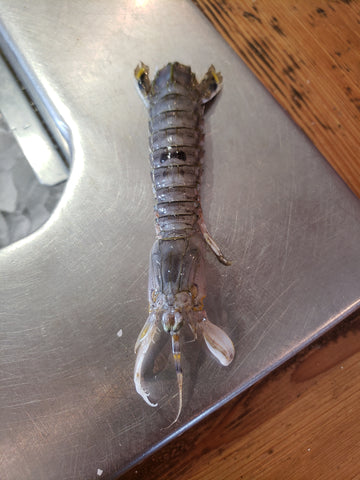
The Process
Its Sunday afternoon and I have a delimma like most fly tyers. On the Forgotten Coast we are between seasons. We had a great Tarpon Season but the migration is slowly starting to leave as they do every year. I hope that I was able to get an angler connected with the fish of lifetime, either with one of my guides that I work with or one of my flies. One of my flies. It sounds very cool to say it. To say that you caught a triple digit Tarpon on a fly that I designed. But now that season is gone and the next one is coming. So I want to come up with a new fly for the fall/winter Redfish season. But where do I begin. How do I start.
Well this is my creative process that I go through. Let me first start off by saying that I am very lucky to have a shop full of material that I get to choose from. But I also do a LOT of work scouring the internet for new material. Does anyone have a new natural material that isn't used for Saltwater flies but could be? Did someone find a new synthetic material that would work perfect on my next fly.
I am by no means on the caliber of Drew Chicone or Bill Laminack of Panama City when it comes to design or invention. But I have a couple very productive patterns. So lets look at a few issues to think about first and foremost.
TYPE - is it going to be a topwater, suspended, or bottom? This is probably the most important factor because your design will start with that.
But lets say you don't know that answer. Here is another approach that I am dealing with right now. So I was at my local seafood market, 13-mile seafood on Water Street in Apalachicola getting some dinner. The owner TJ said "Hey I have an idea for a new fly. Ever seen a Mantis Shrimp?" I though to myself you mean that cool shrimp that could knock out most MMA fighters with a single blow? yeah I've seen them on Blue Planet, but I said "no". So he goes in the back and brings back this guy.

He said "this is what we call lice, but it is a Gulf Mantis Shrimp. They are killing the redfish with these in the bay right now." I told him thanks for the tip.
So just like that I had an idea for my next fly. A Mantis Shrimp fly. Now I have spent the last two days drawing, taking notes, listing materials, and making up possible names for this ugly guy. I think most fly inventors will tell you that it is rare that a fly just comes out on the first try. It usually takes several tries and more importantly several FAILS. You will fail, you will throw away a lot of mistakes. That is ok.
So I have a idea, lets look at this guy in detail.
-Very long (long shank hook), gray, hard shell, eyes, legs about mid body, tail looks like two flaps, couple antenna, and some appendages at the head.
Now the fun part, picking materials. The biggest hurdle for this guy is the shell section. There are a couple options that come to mind. Pre-made shrimp skins like the ones I sell from Pro-Sportfisher, Crawfish Bodies that Pat Cohen designed (rusuperfly.com), epoxy covered body. Or do I go completely different direction. Do I stack deer hair? Stack EP fiber? Most of these questions will be answered when you try to tie them. Again trial and error is something that all new fly inventors must be OK with. Failure is something that we must learn from.
The other things are just details. What color legs do I use? What do I use for the tail flaps? What do I use for the antenna? This is where local knowledge of your water comes in. I know that certain colors are not popular in my area. Not that they won't work because like my old gym teacher used to say, "Even a blind dog eats!" meaning you will get lucky some times but you need to increase your odds by using colors that work.
So I have my list done of materials I want to try. Now to tie several if not dozens of different variations. Once I have them tied, I will take them all down to the beach and test them. I'm not trying to catch a fish right now, I just want to see how they swim. If it doesn't look natural (Youtube usually has several videos of shrimp, crabs, baitfish swimming. It is a great resource, use it), then you are greatly decreasing your chances of a fish being interested. This process of water testing (or tub testing if you don't live near water) will probably cut your options in half.
Now you can take them out fishing. Don't get discouraged if you don't get any bites. They may not be hungry. Save them and try again. Usually if I don't catch anything after a dozen or more trips, then you might want to rethink. Another tip. Give them away. The more people are testing them, the better. Get people to take notes for you, trust me it will help. I have a huge notebook of designs, notes, etc that I keep.
Hope this helps.
